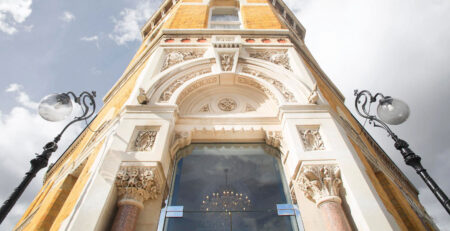Exploring the Docklands: A Historic Journey Through London’s Past
Nestled in the heart of London’s East End lies a storied expanse known as the Docklands. Spanning 22 square kilometres, or nearly 9 square miles, this area boasts a rich tapestry of history dating back to Roman times. Join us on a journey through time as we uncover the fascinating evolution of this vibrant district.
London Docklands: The Origins
Let’s rewind the clock to Roman times, when the Thames was broader and shallower, providing an ideal spot for mooring boats. As the Romans conquered Britain, this marshy terrain began its transformation into fortified embankments. By the 12th, 13th, and 14th centuries, legal quays were established between Tower and London Bridges under the reign of Elizabeth I.
Timeline of London Docklands
1800-1856: The era of British Empire expansion and the advent of steam power led to increased trade activity. Victoria Dock opened in 1855, becoming one of London’s largest cargo hubs by the 1880s.
1880: The demand for more wharf space led to the opening of Albert Dock.
1880-1920: Victoria and Albert Docks thrived as London’s main docks, accompanied by housing expansion in areas like Custom House and Silvertown.
1921: King George V Dock was opened, featuring a new lock capable of accommodating large vessels like the SS Mauretania.
1926: The General Strike highlighted the poor conditions of dockworkers, resolved with aid from the Royal Navy.
1939-1945: World War II inflicted severe damage on the Royal Docks, leading to post-war trade resurgence.
1960-1981: Technological advancements like containerised cargo led to the decline of Royal Docks, culminating in its closure to commercial traffic in 1981.
1981-2020: The formation of the London Docklands Development Corporation sparked regeneration efforts, including the creation of Canary Wharf and London City Airport.
Present-Day Docklands
Today, the Docklands landscape has transformed. Former warehouses now house urban apartments, while some docks serve as marinas or watersports centres. The Royal Docks, designated as an Enterprise Zone, drives economic growth with improved transport links, such as the Elizabeth Line.
London Docklands Museum
Step into the past at the Museum of London Docklands, housed in historic Georgian sugar warehouses. Delve into the port’s rich history, from its bustling trade to its resilience during wartime. Explore exhibitions like the Sugar and Slavery gallery, offering a nuanced perspective on the district’s complex heritage.
As we conclude our journey through the Docklands, it’s worth noting that history isn’t confined to this district alone. The Lansbury Hotel, steeped in its own rich heritage, invites visitors to explore its storied past. Located just a 10-minute walk or 5-minute drive from the London Docklands, it offers a glimpse into another chapter of London’s history. (We also offer a free historic tour of our building for history enthusiasts)!
Come and visit us to embark on your own historical adventure.



